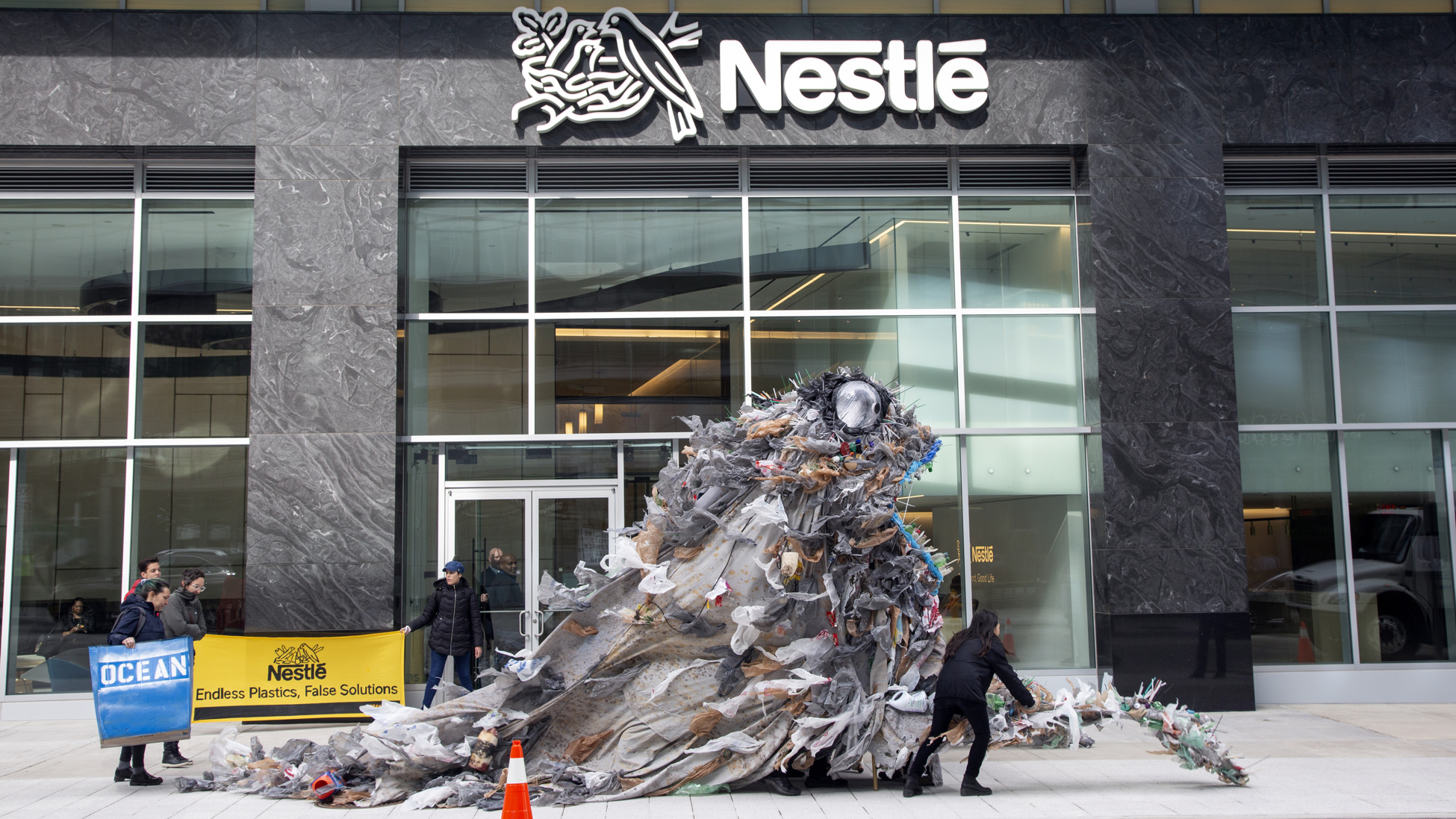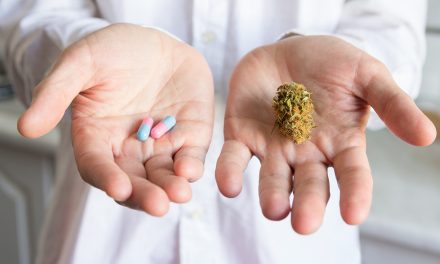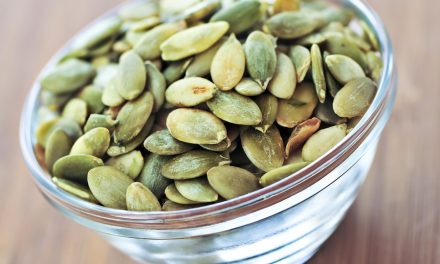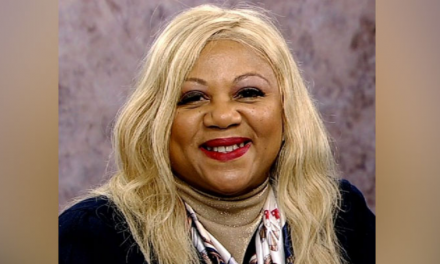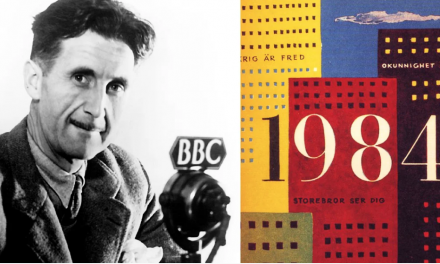Photo: Courtesy of Greenpeace
This week, Greenpeace activists brought a huge, 15-foot-tall heap of garbage, that they had made to look like the deep sea angler fish, and set it up in front of Nestle’s U.S. headquarters in Arlington, Virginia. I wish I could have been there to see it. (An even bigger trash monster was delivered earlier in the day to the company’s global headquarters in Switzerland, while similar leviathans cropped up in Italy, Kenya, and the Philippines, Greenpeace oceans campaigner Kate Melges told Earther in a phone interview.1)
RELATED STORY:
The action was part of a global day of action to raise awareness about Nestlé’s many contributions to the estimated 8 million tons of plastic that enter our oceans each year. (And that number is even higher when you count the plastic that hasn’t yet made it into the ocean.)
“In recent months, Nestlé has come under fire what advocates say is an outsized contribution to the plastic crisis. An 2018 audit conducted by a constellation of groups under the banner Break Free From Plastic found Nestlé products to be the third the most often-recovered pieces of ocean trash.”1
RELATED STORY:
As pressure has increased, Nestle says they’ve made some “positive steps” which include saying they will phase out “non recyclable or hard to recycle” plastics by 2025 (starting with plastic straws in 2019) and introducing more reusable packaging. However, we know that just because something is recyclable doesn’t mean it will get recycled.
“But many environmentalists consider recycling-focused pledges to be wholly inadequate. After all, recycling still takes energy, contributing to climate-warming carbon emissions. And plastics recycling, specifically, has been a mess ever since China, a major player, stopped accepting imports of post-consumer plastic last year. Recyclers all over the U.S. and the world increasingly have been forced to divert plastic to landfills or incinerators, a problem that is only expected to grow.”1
RELATED STORY:
In truth, rather than promise to help recycle the mess they’ve made, they need to go back to reusable packaging. Or better yet, get out of the bottled water business altogether.
“In a statement provided to Earther, Nestlé touted its efforts to do exactly that, including a recent partnership with Loop that allows customers to get their Häagen-Dazs fix guilt-free (or guilt-reduced) by purchasing it in a ‘reusable double-walled steel ice cream container.’
‘We are determined to reduce our use of single-use plastics,’ a Nestlé spokesperson told Earther. ‘We are introducing reusable packaging, new delivery systems and innovative business models.’”1
We shall see. The truth is, the world is covered in plastic, including micro plastic that we can’t see but are ingesting anyway. It’s long past the time to do something about it and Nestle should be at the forefront.
SOURCE:



